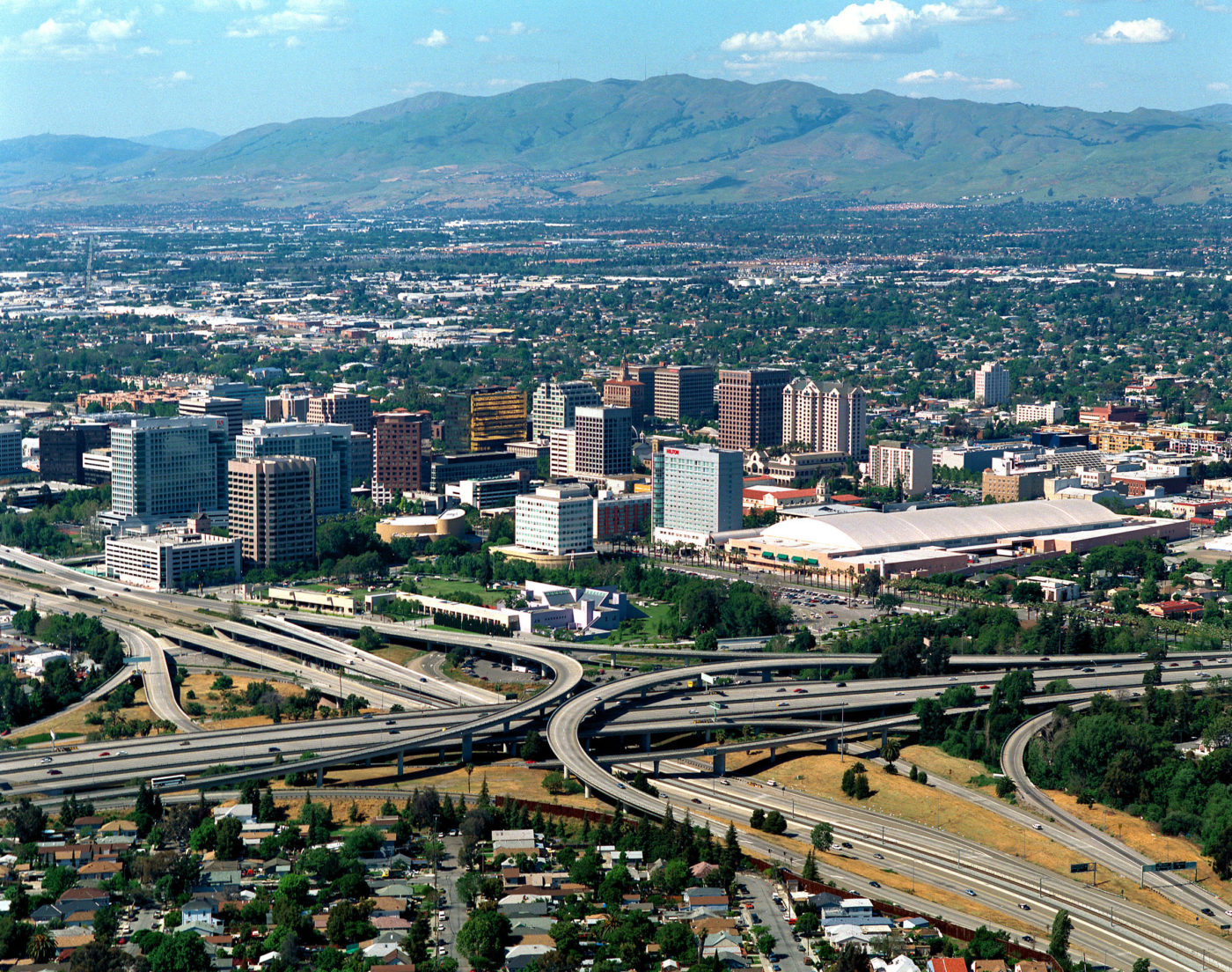Housing must be considered through a regional lens. Planning for housing city by city or county by county without considering regional implications exacerbates racial and income inequality, and ignores the environmental impacts associated with development, land use, and transportation. With projections that the Bay Area will grow by two million people over the next 25 years it is critical that the nine-county Bay Area work together to accommodate these new residents to mitigate the impact to our residents, their quality of life, and the region’s economic success.
Regional Planning Bodies
Regional planning in the Bay Area is coordinated by two regional planning bodies, two separate and independent organizations with a consolidated staff at MTC serving both governing boards.
- The Metropolitan Transportation Commission (MTC) oversees transportation planning, financing, and coordination. MTC works to improve communities, support the urban core, and encourage transit-oriented development that integrates housing, jobs, and retail around transit hubs.
- The Association of Bay Area Governments (ABAG) is the Bay Area’s Council of Governments, providing planning and research around a variety of issues faced by the more than 100 area governments, preparing information on housing trends, and managing the Regional Housing Needs Allocation process.
Following their consolidation in 2017, ABAG and MTC continue to share joint responsibility for Plan Bay Area, now with a single staff, serving both the ABAG Executive Board and the MTC Commission.
CASA – the Committee to House the Bay Area
In December of 2016, the MTC Board approved the creation of CASA – the Committee to House the Bay Area – with the purpose of developing a comprehensive regional approach to identify game changing regional solutions that address the region’s chronic housing challenges, with a focus on supply, affordability at all income levels, and preservation/anti-displacement. The Committee is comprised of two groups – a steering committee and a technical committee.
CASA formally launched in early 2018, beginning with a series of workshops to develop an agreed upon framework. Throughout the winter, SV@Home’s former Executive Director Leslye Corsiglia co-chaired CASA alongside Fred Blackwell, CEO of the San Francisco Foundation, and Michael Covarrubias, Chairman and CEO of TMG Partners. Throughout 2018, CASA continued their work, moving from a framework to established Action Plans that then informed the final CASA Compact, approved by the Steering Committee on December 12, 2018. With a finalized Compact as a guide, CASA shifts to the implementation phase, collaborating with local and state officials to establish a legal framework based on the principles of the CASA Compact.
Plan Bay Area 2050
A cooperative effort between MTC and the Association of Bay Area Governments (ABAG), Plan Bay Area is a long-range regional strategic plan focused on the interrelated elements of housing, the economy, transportation and the environment for the nine-county Bay Area. It incorporates a State-mandated Sustainable Communities Strategy (see SB 375 below). As required by both State and federal law, the regional plan must be updated at least every four years to incorporate new funding and population forecasts. Plan Bay Area 2050 aims to make the region more affordable, connected, diverse, healthy and vibrant, and accommodate a growing population expected to reach 10 million by 2050. The plan’s housing strategies aim to protect and preserve affordable housing, spur housing production for residents at all income levels, and create inclusive communities.
BAHFA: The Bay Area Housing Finance Authority
The Bay Area Housing Finance Authority (BAHFA) is the first regional housing finance authority in California. BAHFA has the potential to raise hundreds of millions of dollars to help address affordable housing — and housing stability — in the Bay Area. BAHFA was established by California State Legislature AB 1487 (2019, Chiu) to support the production and preservation of affordable housing by placing new revenue options on the ballot. Currently, the Bay Area’s nine counties and 101 cities and towns address most housing issues individually, and often with limited staff and financial resources. BAHFA instead encourages coordination, regional thinking, and working together to tackle the housing crisis on a larger scale. BAHFA shares decision-making with the ABAG Executive Board related to raising revenues or expenditure of funds.
SB 375
The State’s landmark planning law — the Sustainable Communities and Climate Protection Act, known better as simply Senate Bill 375 — was approved in 2008 requiring metro areas to adopt strategies that reduce greenhouse gas emissions from cars and light trucks as assigned by the California Air Resources Board (CARB). In June 2017, CARB released a proposed update to the Greenhouse Gas Emission Targets.
Additional Resources
Regional Planning Resources
- Metropolitan Transportation Commission (MTC) & Association of Bay Area Governments (ABAG): Plan Bay Area
- Enterprise: “The Elephant in the Region: Charting a Path for Bay Area Metro to Lead a Bold Regional Housing Agenda,” 2017
- Non-Profit Housing Association of Northern California: “On Track Together: Housing and Transportation: Building the Bay Area’s Vibrant, Sustainable, and Affordable Future Together,” 2017
- Metropolitan Transportation Commission (MTC): Vital Signs Website
- UC Davis Center for Regional Change: “The Effectiveness of Regional Housing Policy: Evidence from the San Francisco Bay Area,” 2015
CASA
- Metropolitan Transportation Commission: “Regional Housing Policy,” 2016
SB 375
- California Air Resources Board: “Association of Bay Area Governments (ABAG) and Metropolitan Transportation Commission (MTC)” 2017

